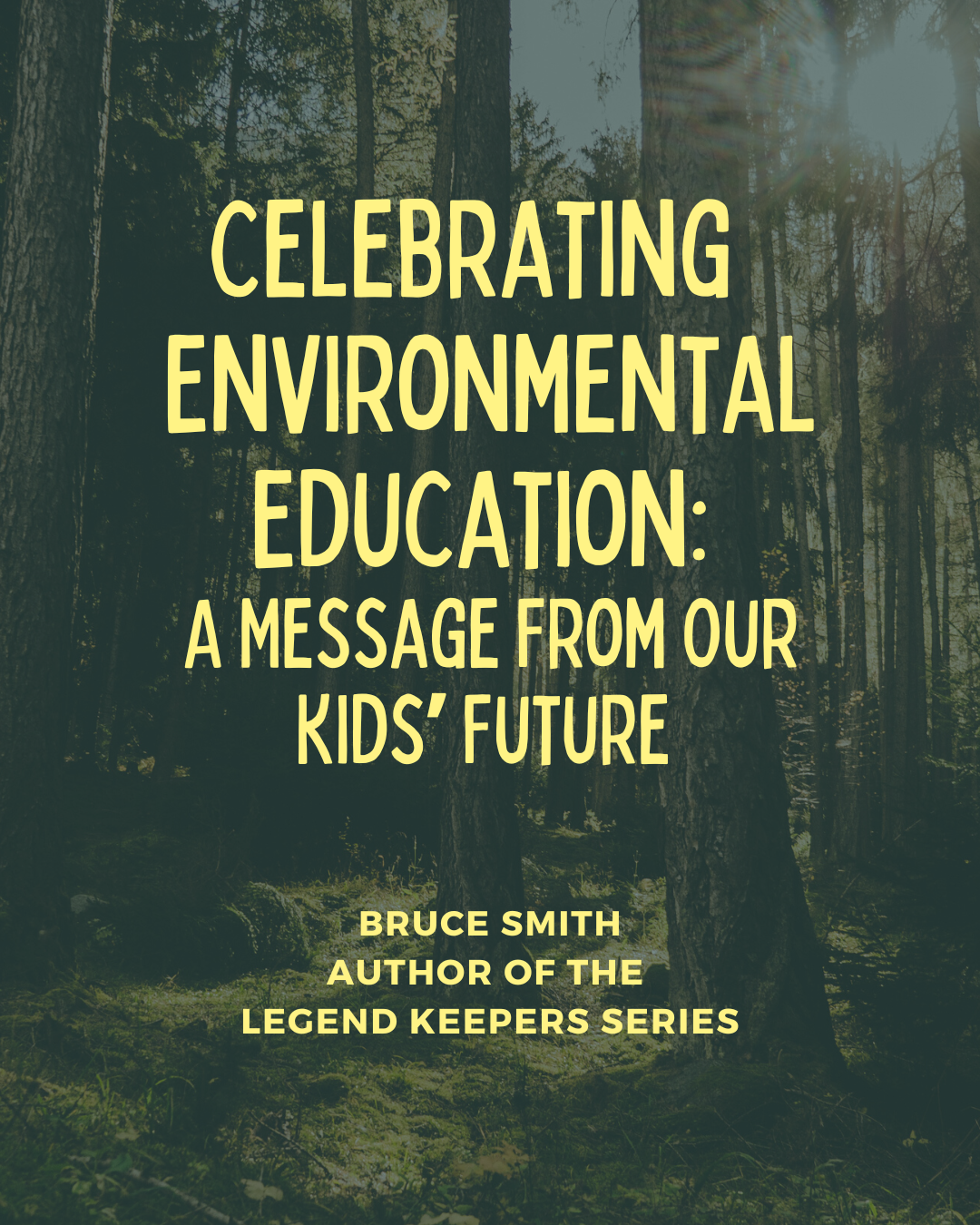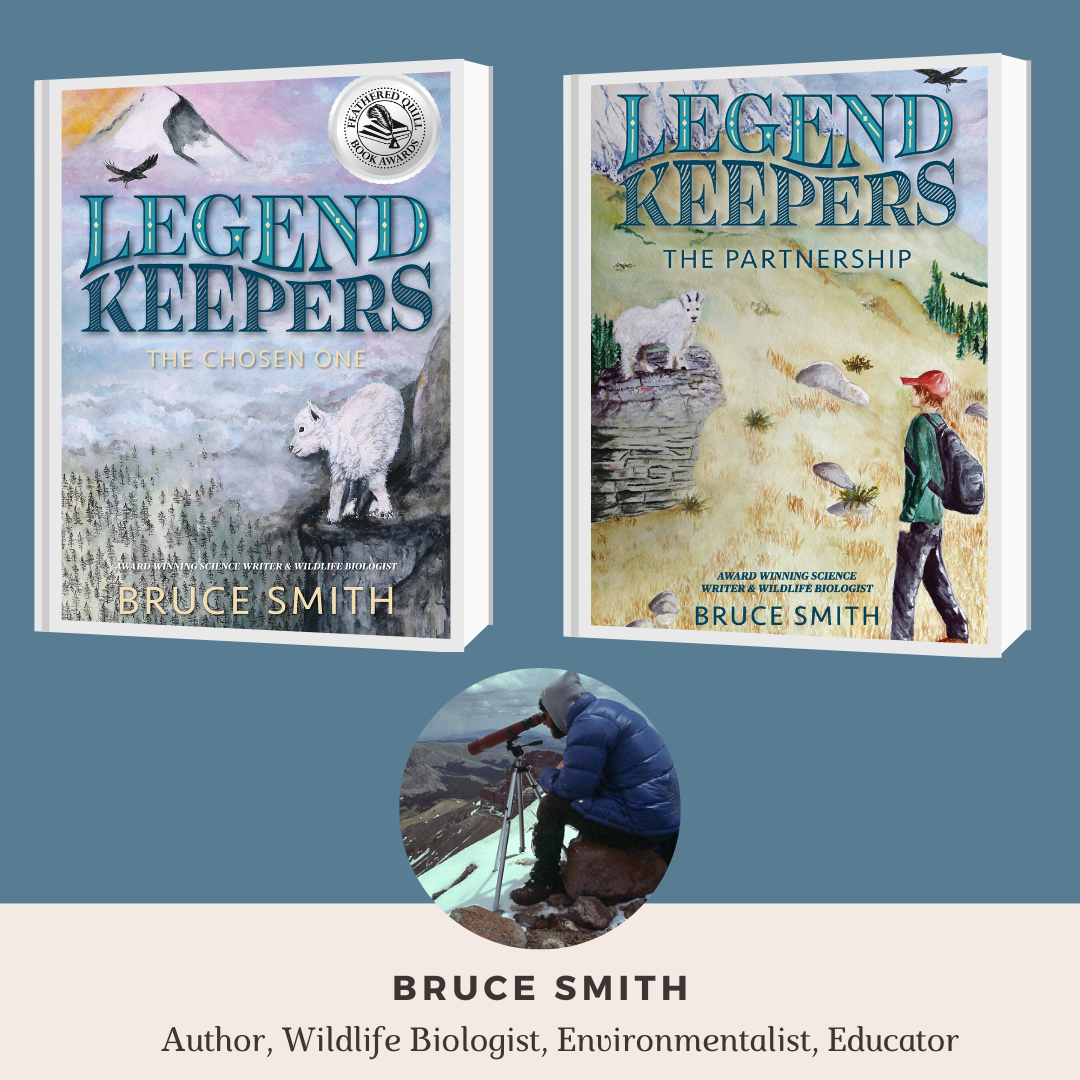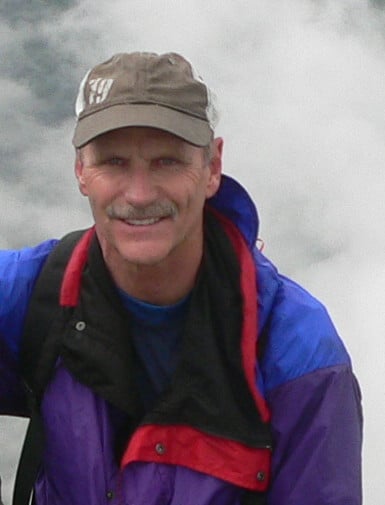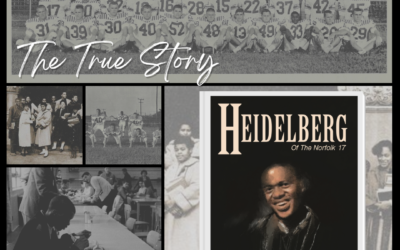
Celebrating the Earth and Environmental Education: A Message From Our Kids’ Future
Bruce Smith
National Environmental Education Week
National Environmental Education Week is upon us, culminating in Earth Day on April 22. According to a study by Stanford University, programs for children that focus on environmental education tend to foster a desire for knowledge and equip them with skills to critically analyze problems. The goal, then, is to prepare students to solve environmental crises plaguing our planet.
As a scientist who’s spent much of my life researching and managing wildlife and their habitats, environmental education is an important product of my work. But recently I changed course. Instead of writing adult nonfiction about science and natural history, I switched to children’s fiction.
Using Fiction to Share Facts
“Why fiction?” a friend asked. I’ve found that people are influenced by stories as much, and maybe more, than by facts and figures. Don’t get me wrong, I’m not abandoning my belief in science’s necessity. I’ve just come to believe that science-derived information can be folded and blended into entertaining stories that capture the imaginations of readers. Learning becomes a part of the reading experience.
Legend Keepers Middle-Grade Series
So, my middle-grade novel series, Legend Keepers, wraps its environmental message in a grand adventure at the roof of the world. Readers, young and old alike, experience the mountains’ changing climate through the eyes and lives of the books’ characters, both kids and wild animals. The co-protagonists, twelve-year-old Garson and Buddy, a female kid mountain goat, find that solving big problems requires commitment and help from others. They also find that the problems facing them are not so different. Such stories of hope and empowerment can inspire readers to do something—and sometimes more than we thought we could—to make our world better.
Why write for kids? Because kids’ have most of their lives yet to live. What we adults do during our lives will affect today’s kids for decades. This too has been the belief of American Indigenous Tribes who historically lived their lives mindful of the next seven generations.
Climate Crisis
The climate crisis is the foremost example of this. How we, and previous generations, have used and abused its resources is changing our planet as greenhouse gases accumulate in the atmosphere and warm the climate. Since 1880, the average global temperature has warmed by 1.2º degrees Celsius (2º Fahrenheit). Most of the increase has occurred since 1970, the first year Americans celebrated Earth Day.
Global Weirding
Although the temperature rise in recent decades may sound minor to some, its consequences are clearly not. So if global warming doesn’t strike a chord, then think of what’s happening as global weirding. I find that a useful way to comprehend 25 inches of rain in Fort Lauderdale in seven hours, or epic drought followed by epic rainfall and snowfall in California. One-hundred-year and five-hundred-year weather events are happening way more often than that. In an article in the September 2022 issue of Science magazine, the authors forecast that today’s six-year-olds will experience three times as many climate disasters in their lifetimes as their grandparents will.
What We Do –What Can We Do
Science provides a rigorous process for exploring and describing natural phenomena. Science can also forecast outcomes of alternative courses of action, which can be used for solving problems. But science does not tell us what is the “right” thing to do. It’s not a decision-making process. Science only provides a rationale for decision-making.
Ultimately, humans can and do, disregard science when addressing problems. Our values, cultural and social mores, and economic interests often prevail. Today’s climate crisis is a crisis of leadership. So young people around the world, like Swedish climate activist Greta Thunberg, are seeking ways to fill the void.
Preparing and Inspiring the Next Generation
So how do citizens influence decision-makers to make decisions that best benefit today’s kids’ future health and welfare, and by extension, the sustainability of our planet? Exploring the book, All We Can Save, edited by Ayana Johnson and Katharine Wilkinson is one place to start. For kids, there are many ways to engage in environmental issues. Participating in this year’s Earth Day community events is a fun and simple starting point.
Science has the wonderful capacity to open young minds to possibilities. It prompts them to ask questions about the world they live in, especially the “how” and “why” questions. Most advances in civilization are the result of scientific investigation and invention. Science continues to provide the tools and strategies for combating environmental problems like climate change. And that’s why teaching STEM in schools, beginning in elementary grades, is so important. It helps prepare young people to face a challenging future.
Literature Enhances Science Education
I also believe that literature can enhance classroom science education. Both nonfiction and fiction—including eco-fiction—convey engaging and evocative examples of science in action. Such storytelling helps both young and old to see what’s possible. Stories inspire us to imagine what could be. We need to be able to imagine, to dream of the future we want–only then can we seek and achieve it.
This is our shared responsibility to future generations, and to planet Earth.

“…𝐚𝐧 𝐢𝐧𝐟𝐨𝐫𝐦𝐚𝐭𝐢𝐯𝐞 𝐚𝐧𝐝 𝐥𝐨𝐯𝐢𝐧𝐠𝐥𝐲 𝐜𝐫𝐚𝐟𝐭𝐞𝐝 𝐧𝐚𝐫𝐫𝐚𝐭𝐢𝐯𝐞…
𝐀𝐧 𝐞𝐧𝐜𝐡𝐚𝐧𝐭𝐢𝐧𝐠 𝐭𝐚𝐥𝐞 𝐰𝐢𝐭𝐡 𝐚 𝐬𝐭𝐫𝐨𝐧𝐠 𝐞𝐧𝐯𝐢𝐫𝐨𝐧𝐦𝐞𝐧𝐭𝐚𝐥 𝐦𝐞𝐬𝐬𝐚𝐠𝐞.”
–𝘒𝘪𝘳𝘬𝘶𝘴 𝘙𝘦𝘷𝘪𝘦𝘸𝘴
The Award-winning Legend Keepers novels are geared toward middle-grade readers (8-12 year-olds).
In this eco-fiction trilogy, we experience and come to understand, through the eyes and lives of both kids and animal characters, what a warming climate and melting glaciers mean for alpine environments.
This is a story of overcoming obstacles, dealing with loss, and learning the importance of friendships and family. And from a small mountain goat and one twelve-year-old boy, we realize that each of us can do something — and more than we realized — to make our world better.
Above all, Legend Keepers is an adventure tale of empowerment and hope.

Written by Bruce Smith
Bruce Smith is a wildlife biologist who holds a PhD in Zoology. During his career with the federal government, he studied and managed most large mammal species that roam the western United States. In Legend Keepers, his first novel, he draws upon his experiences and fascination with wild animals to stir the imaginations of young readers and immerse them in the natural world.
Bruce and his wife, Diana, live in southwest Montana not far from mountain goats.
Recent Posts
Summer Reading List 2024
Summer Reading List–
12 books that I am adding to my TBR list this summer and 12 Hidden Shelf titles that you should add to yours!
Black History– On This Day in 1959
Black History – On This Day in 1959
The Norfolk 17–February 2, 1959
Sixty-five years ago today, seventeen cautiously brave Black teenagers rocked the foundation of the racist South, accomplishing what many at the time had thought impossible … ending segregation at six public schools in Norfolk, Virginia. If getting there had been a war, being there was horrendous.
2023 Holiday Gift Guide
Unique and creative gifts ideas for the 2023 holiday season!



